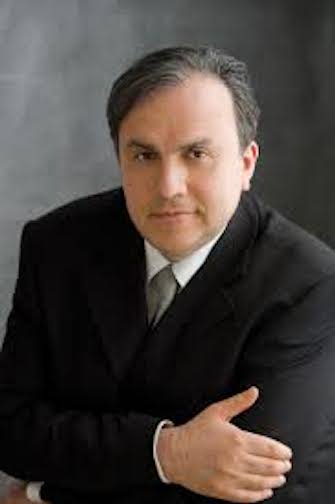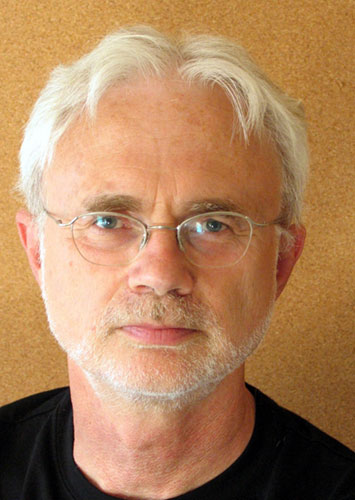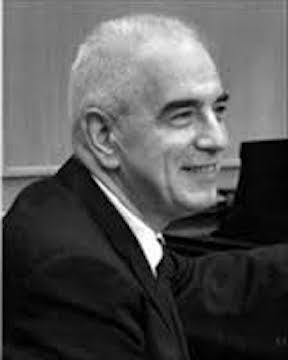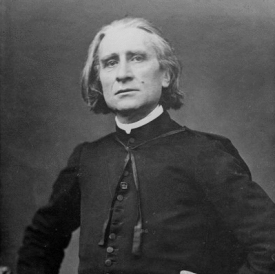The Well-Tempered Ear
Classical music: Is this the minority report of a dissenter? The Ear offers some thoughts and after-thoughts from recent concerts by the Madison Symphony Orchestra, the Wisconsin Chamber Orchestra, the Pro Arte String Quartet, the Middleton Community Orchestra and pianist Christopher Taylor. Plus, here are links to rave reviews of this afternoon’s final all-Beethoven concert by pianist Yefim Bronfman and the Madison Symphony Orchestra.
1 Comment
ALERT: Today at 2:30 p.m. in Overture Hall of the Overture Center is the final performance of the all-Beethoven concert by the Madison Symphony Orchestra under John DeMain. It features pianist Yefim Bronfman (below) in TWO piano concertos (Nos. 2 and 5 “The Emperor”) plus the Symphony No. 1 and “The Creatures of Prometheus” Overture. Here are links to two rave reviews of the concert by Madison Magazine critic and blogger Greg Hettmansberger and by Isthmus critic John W. Barker, who also guest blogs for The Ear. It sure sounds like a NOT-TO-BE-MISSED concert. See you there!
http://www.thedailypage.com/daily/article.php?article=42237
By Jacob Stockinger
It has been a very busy time musically in Madison, with a lot of previews to post, which often supplant reviews since The Ear thinks previews are more useful than reviews to most listeners and performers. And this coming week and weekend are even worse. So much music, and so little space!
But here are some “outdated” capsule reviews, impressions really, with accompanying afterthoughts that come to The Ear as he listened and later thought about what he had heard:
MADISON SYMPHONY ORCHESTRA AND TRUMPETER TINE THING HELSETH
It seemed a curious, even odd theme for a Valentine’s Day program. But BRASS – not romantic love — marked the Valentine’s Day weekend performances by the Madison Symphony Orchestra (below), although ending with the “Rosenkavalier” suite by Richard Strauss did indeed prove an inspired choice to combine brass and love. Plus by all accounts, the concert sold very well. It sure got standing ovations. In short, it may have seemed odd, but it worked.
The “Doctor Atomic” Symphony by the contemporary American composer John Adams (below), who put the instrumental work together from his own opera score, was powerful, and also fit the brass bill, with great solos by MSO trumpeter John Aley, and was impressive to hear –- though also hardly romantic.
Given conductor John DeMain (below) and his stupendous taste and talent for choosing great singers who are also affordable, I kept thinking: How I would like to have heard some great singers perform familiar and unknown love arias from operas by Mozart, Rossini, Verdi, Puccini, Saint-Saens, even Wagner. Now those would be symphony tickets to throw in with a box of chocolates and a bouquet of roses. But The Ear has been informed that such concerts often do not sell well and might also be seen as competing with the local opera company.
All that said, I thought that the guest soloist, Norwegian trumpeter Tine Thing Helseth (below), proved an inspired, if unexpected, choice. She showed an uncanny power for playing softly. Brass instruments are not easy to control with little breath and with soft tone. But she did both beautifully in two concertos by Franz Joseph Haydn and Alexander Arutiunian. She clearly has the lung power to blow down the Walls of Jericho. But what impressed and seduced me was her quietness, which nonetheless possessed rich tone and unwavering pitch. That is a rare talent, and one to be cherished — and brought back to Madison!
Maestro Andrew Sewell (below) has a never-failing knack of finding terrific music that has been overlooked but is actually very good, if not revolutionary or pioneering.
Sure, at his last concert I too, like the rest of the audience, loved what he did with the Jupiter Symphony of Mozart –- not too hectic, clear voicing, propulsive energy even with all the repeats. And the talented and congenial soloist Joshua Roman proved an irresistible highlight in Haydn’s Cello Concerto in D major.
But the real surprise of the night was the 20th-century Concerto Grosso by Vittorio Giannini (below), who taught composition at the Juilliard School and the Manhattan School of Music and then established the North Carolina School of the Arts. What a discovery! I want to hear more by this guy.
And Sewell will soon unwrap another surprise this week –- and I expect, as usual, that it will be modern music that is accessible and tuneful, not R&D Music (that’s short research and development) that sounds like jet noise or broken plumbing. Could that help explain why he gets full houses?
Sewell and the WCO will probably do so again THIS COMING FRIDAY NIGHT at 8 p.m. in the Capitol Theater of the Overture Center. That is when he and the Wisconsin Chamber Orchestra combine the famous famously listenable and lovely Violin Concerto (with guest soloist Karina Canellakis) by Felix Mendelssohn and Franz Joseph Haydn’s “Clock” Symphony (Symphony No. 101 of his 104 symphonies) with “Elements” by American composer Michael McLean (below, and with a sample of “Elements” in a YouTube video at the bottom). Sounds like another MUST-HEAR concert to The Ear.
PRO ARTE QUARTET
Well, the headlines and chit-chat went rightfully to the world premiere of Belgian composer Benoit Mernier’s commissioned String Quartet No. 3, which sounded fiendishly difficult and seemed based largely on technical stuff like trills, tremolos and glissandos instead of themes and infectious rhythms. And the Pro Arte Quartet, artists-in-residence at the University of Wisconsin-Madison School of Music since 1940 and celebration its centennial, played it with impressive aplomb and apparent ease.
“Do you like the music?” someone asked me right after the performance.
I think the better question is: “Does the music like me?”
Think about it: What is the composer’s responsibility to you the listener, and what is your responsibility to the composer (Mernier, below), especially if he seems to ignore you?
I also loved the rarely heard and beautifully performed viola quintet by Anton Bruckner and particularly the contrasts between Sally Chisholm’s viola and Samuel Rhodes’ viola (the two are below side-by-side). If you liked the combination –- and what is not to like with the darker hued voice of the viola –- be sure to try the viola quintets by Mozart and Brahms, which I would also like to hear the Pro Arte do more of.
But for old-fashioned me, the star of the evening was the Haydn Quartet, Op. 20, No. 4. It just cleaned out your ears and was proof again that, at its best, the genre is indeed still as it was described by Haydn himself when pretty much invented in the 18th century: A conversation of equals. And did the Pro Arte ever play it with accuracy, clarity and texture. It sparkled like a diamond. The string quartet may have evolved, changed or morphed over the centuries, but it has simply not gotten any better than Haydn.
So: Is there any chance that we night get of a multi-year Haydn cycle by the Pro Arte, which decades ago in another avatar or configuration of players started to record the complete Haydn quartets in the famous Abbey Road studio in London for RCA. They have done Beethoven and Shostakovich cycles. What about Papa Haydn? And if not a complete cycle of the 68 or so quartets, how about a fairly comprehensive survey or at least a very large sampler of Haydn’s early, middle and late styles?
PIANIST CHRISTOPHER TAYLOR
What more can you say about the award-winning, audience-approved star talent pianist Christopher Taylor (below) who teaches at the University of Wisconsin-Madison School of Music and concertizes around the world, and his stunning solo recital this year?
I loved the “War” Sonata No. 6 by Sergei Prokofiev, a great piece that he performed greatly with both riveting energy and heartbreaking lyricism. I also loved the encore — Scott Joplin’s “Pineapple Rag” –- as a contrast and change of pace.
But I have to be honest: I have heard enough of the Liszt piano transcriptions of Beethoven’s symphonies. Trust the genuine original! Accept no substitutes!
The next day I listened to a recording of the same work by a real orchestra — the Gewandhaus Orchestra of Leipzig under conductor Riccardo Chailly. What a difference when the “Eroica” is played with real brass countering, with jarring dissonance, real strings; when it is real tympani drumbeats rather than bass tremolos on the piano. Ludwig (below) simply had more of IT – whatever musical genius is — than Franz.
The real “Eroica” Symphony doesn’t — and shouldn’t — sound so much like a Hungarian Rhapsody or a Transcendental Etude. In their day, these transcriptions served a purpose and they stretched the resources of the piano, or at least, of pianists. Now, they strike The Ear as precious, more of a sideshow of amazing and ingenious pianism and not much little else aside from some strokes of minor genius here and there by the Paganini of the Piano.
From one of those transcriptions I learned something and I enjoyed it. But now that makes three down (symphonies numbers 3, 4 and 5) for Taylor. I, for one, sure hope we don’t have the other six to go. How much more I would have preferred to hear this supremely talented pianist and gifted musician in some serious and original piano repertoire –- maybe a late Schubert sonata, or a Bach partita, or a Chopin ballade, or a Schumann cycle. I want to hear Christopher Taylor in something that puts depth over display, substance over style.
Am I alone in that wish?
MIDDLETON COMMUNITY ORCHESTRA
Guest reviewer John W. Barker covered this recent concert of the mostly amateur Middleton Community Orchestra (below), which featured music by Nikolai Rimsky-Korsakov, Johannes Brahms and Wolfgang Amadeus Mozart, thoughtfully and thoroughly for this blog.
All I would add is a lesson that every teacher knows: Students with lesser abilities rise to meet high expectations. That is why symphony orchestras and chamber orchestras should book the best soloists they can get and afford: The Ear is convinced that the level of playing and performing usually rises to match the soloist and fosters cohesion.
With the MCO, it was two lifelong friends and award-winning, UW-Madison trained string players -– violinist Eleanor Bartsch and violist Daniel Kim (below) who soloed and who seemed in complete synch, down to the timing of their trills, during Mozart’s sublime Sinfonia Concertante.
Their playing was superb, and the amateur orchestra rose to meet them and give them the beautiful support they deserved. And with Mozart there is no place to hide, so flaws or mistakes are quickly revealed.
Well, now it is on to another busy week of concerts.
Where, I wonder, will the music lead The Ear this time?
Tags: Alexander Arutiunian, amateur, Anton Bruckner, arias, Arts, Beethoven, Belgium, Benoit Mernier, brass, Cello, Cello Concerto, Chamber music, chamber orchestra, Claudio Monteverdi, community orchestra, concerto, conductor, Creatures of Prometheus, Doctor Atomic, Eroica Symphony, Felix Mendelssohn, Finlandia, Friday, Gewandhaus, Giacomo Puccini, Haydn, Jacob Stockinger, Jean Sibelius, Johannes Brahms, John Adams, John DeMain, Joseph Haydn, Joshua Roman, Juilliard School, Leipzig, Leipzig Gewandhaus, Love, Ludwig van Beethoven, Madison, Madison Opera, Madison Symphony Orchestra, Manhattan School of Music, Michael McLean, Mozart, Nikolai Rimsky-Korsakov, North Carolina School of the Arts, Orchestra, Overture, Overture Center, Piano, Piano concerto, Pro Arte Quartet, Puccini, Riccardo Chailly, Richard Strauss, Rossini, Saint-Saens, Samuel Rhodes, Scott Joplin, Sergei Prokofiev, singer, String quartet, string quintet, symphony, Tine Thing Helseth, transcription, Trumpet, University of Wisconsin-Madison School of Music, Valentine's Day, Verdi, Viola, viola quintet, Violin, Violin concerto, Vittorio Giannini, vocal music, Wisconsin Chamber Orchestra, Wolfgang Amadeus Mozart, Yefim Bronfman, YouTube

























